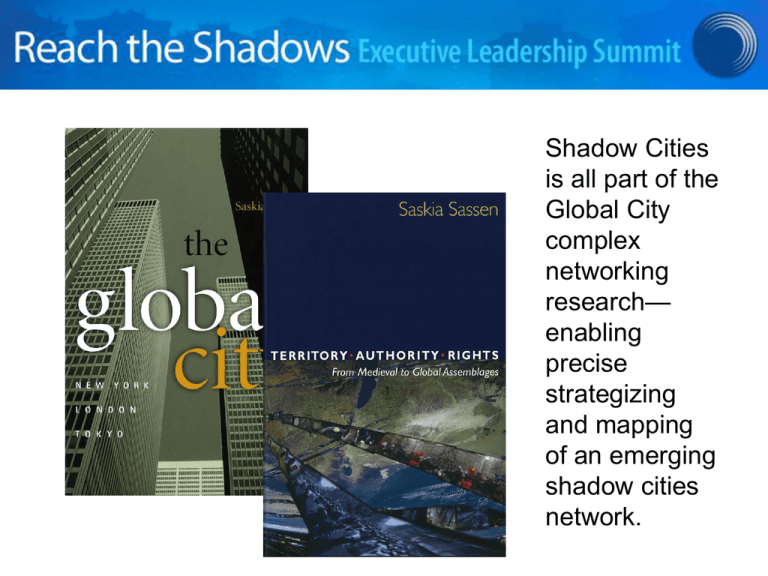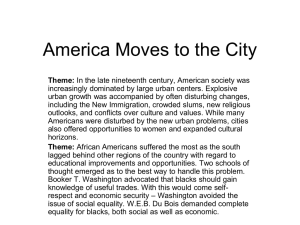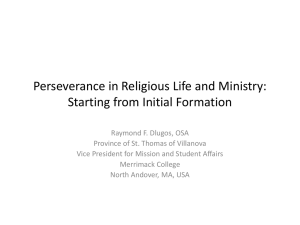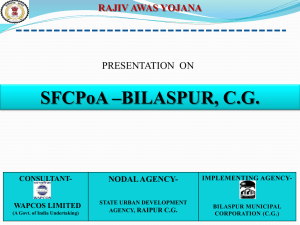Shadow Cities
advertisement

Shadow Cities is all part of the Global City complex networking research— enabling precise strategizing and mapping of an emerging shadow cities network. Shadow Cities provides a research base for the next 35 years of church planting in the slums, affecting over 3 billion people. Let’s look at this TED video Key Issue: The Strategic Nature of Slums in Global Cities Based on Robert Neuwirth’s “Shadow Cities” talk 1. What do you think is Neuwirth’s main point? 2. How should we think about these things as Christians today? What are the implications for relief and development? 3. How does this make you think about the “good life”? 4. What opportunity do you see here for the global progress of the gospel? Key issue—a few implications 1. 2. 3. 4. 5. 6. The Church is God’s plan; so progressing the gospel through evangelizing key “shadow cities,” establishing churches, and training leaders is the starting point. Once movements of churches begin becoming mature “benefactor communities” in these shadow cities, God’s relief/development plan can go into full swing. These “shadow cities” are based on the household social structure and are prime for the progress of the gospel. Our relief/development strategies will come alive when we work through movements of churches rather than through large Western NGOs and governments of developing countries. Over the next 35 years, “shadow cities” are about as strategic as you can get. These movements of churches, and their emerging benefactors, in partnership with Western churches, and their emerging benefactors, pave the way for enormous partnerships. Out of this has emerged a new strategy—actually just a logical extension of the existing global city/urban center strategy. Key issue in the growth of the Church in the next 35 years: squatters, slums, shanty towns Today – 1 in 6 billion live in slums. In 2030 – 2 of 7 billion will live in slums. By 2050 – 3 of 9 billion will live in slums. It is obvious that this should be a major focus of church planting. Our first step—Mumbai: • Mapping church-planting movements between now and July. • Meeting with key church-planting movements in Mumbai in July. Shadow Cities—2050 Shadow Cities (Global Slums) are the key to world evangelization between now and 2050. Whereas Global Cities themselves serve as the foundation, the long-term success is rooted in a Global Slums strategy. Shadow Cities: A Billion Squatters, a New Urban World by Robert Neuwirth (Routledge, 2005) “The Global City and the Global Slum” by Saskia Sassen, in Forbes, 3/22/2011 Shadow Cities—2050 Here is the logic: 1. One billion of the six billion people today live in slums; by 2030 two billion of seven billion will live in slums; by 2050 three billion of the world’s nine billion will live in slums. 2. Global cities—a complex network taxonomy for mapping globalization—is the modern day “Roman road,” thus key to understanding how to build complex network strategies consistent with “the way of Christ and His Apostles,” which is illustrated in the “Complex Mapping of the Early Church.” 3. Global Slums in the Global South are emerging around Global Cities that are key to understanding the global network of slums and its informal economy, which will contain almost all of the global population growth between now and 2050. Ibid. Neuwirth, pg. “The Early Churches: From Simple Church to Complex Networking” by Jeff Reed Stealth of Nations: The Global Rise of the Informal Economy, by Robert Neuwirth (Pantheon Books, 2011) 4. These Global Slums are reshaping the concepts of territory, authority, and rights in much the same way that modern nation-states reshaped the medieval feudal states. They will lead to a whole new set of global assemblages—known as Global Cities or Global City States—probably not unlike the model that has emerged in Singapore. 5. These Global Slums are and will continue to be ripe for the gospel and must be central to any global strategy for the progress of the gospel through church-planting movements. In fact, they will emerge as the cities of the future. 6. Robert Neuwirth, in Shadow Cities, labels these Global Slums as “shadow cities” and demonstrates that they are not communities of urban decay and despair, but are actually emerging cities governed by hope and are forward looking. Territory, Authority, Rights: From Medieval to Global Assemblages, by Saskia Sassen (Princeton, 2006) Here is the logic: 7. In the shadow of our Global City 2025 strategy is an emerging Global Slum 2050 (Shadow Cities’) strategy for leadership development and church planting—a strategy that by 2050 will lead to a modern day, Global South Apostolic Network, which will once again, as in the Early Church, turn the entire world upside down—thus leading to a transformation of the Global City . . . or the return of Christ. Our first step—Mumbai • Meeting with key church-planting movements in Mumbai – Mumbai Christian Directory 2012 • Mapping of church-planting movements 2013-2016 Prototype BoP mutual investing projects “Competency Cohort” sponsorships – 2013 2016 By fall of 2016 Mumbai “Shadow City” Prototype This will be our first “shadow city” prototype that will sit as the “proof” of this amazing strategy. Our prototype will include the following: 10 D. Min; $50,000 ($5,000 each) 100 M. Min; $500,000 ($5,000 each) 1,000 B. Min; $500,000 ($500 each) 10,000 BILD Institute; (built in) Shadow Cities 2050 - $868 million - $39 per leader Global Slums – Antioch School (starting point as network hubs) 20,000 D.Min. – $400 x 20,000 = $8 million 200,000 M. Min. – $300 x 200,000 = $60 million 2,000,000 B. Min – $200 x 2,000,000 = $400 million Global Slums – BILD Institute 20 million Grassroots LM I-III Certificate – $400 million ($20 x 20,000,000)








